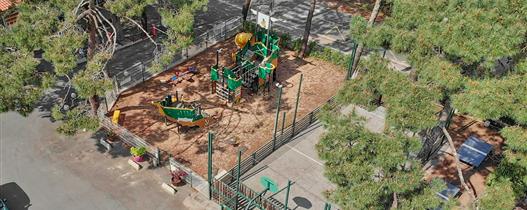Home > Beaches > Beaches, near the campsite > Wildlife and the flora in the Belle Henriette nature reserve
Wildlife and the flora in the Belle Henriette nature reserve
The Fauna and Flora of the Belle Henriette Nature Reserve
The Belle Henriette Nature Reserve, located in La Faute-sur-Mer, is a biodiversity sanctuary which extends over more than 337 hectares. This exceptional site is home to a rich variety of fauna and flora, constituting a true ecological treasure of the French Atlantic coast. The reserve's different habitats, such as lagoons, marshes, wet meadows and dunes, create a unique environment conducive to wildlife. Let's explore in detail the biological diversity of this remarkable place.
The Flora of Beautiful Henriette
The vegetation of the Belle Henriette Nature Reserve is adapted to specific coastal conditions, including sand, salt and sea winds. Each habitat is home to distinct plant species that contribute to the botanical richness of the region.
1. Coastal Dunes: Dunes are home to hardy plants such as marram (Ammophila arenaria), which plays a crucial role in stabilizing the sand. There are also sand lyme (Leymus arenarius) and dune everlasting (Helichrysum stoechas), which add touches of color and fragrance to this arid environment.
2. The Marshes: The salt marshes are dominated by halophilic (salt tolerant) species such as salicornia (Salicornia europaea) and maritime soda (Suaeda maritima). These plants are well adapted to salinity fluctuations and contribute to the ecosystem by providing shelter and food for various animal species.
3. Wet Grasslands: Wet meadows are home to diverse vegetation including species such as seagrass (Juncus maritimus) and sea lavender (Limonium vulgare). These areas are crucial for nesting and feeding for many species of birds.
The Fauna of Belle Henriette
The diversity of habitats of Belle Henriette offers refuge to a wide variety of animal species, some of which are rare and protected.
1. Birds: The reserve is an important site for ornithology, attracting many species of migratory and sedentary birds. Among the emblematic species, we find the Pied Avocet (Recurvirostra avosetta), recognizable by its curved beak and its contrasting colors. The gray heron (Ardea cinerea) and marsh harrier (Circus aeruginosus) are also common, as are various species of ducks and waders.
2. Amphibians and Reptiles: The wetlands of the reserve are ideal habitats for amphibians such as the marbled newt (Triturus marmoratus) and the southern tree frog (Hyla meridionalis). Reptiles, such as the viper snake (Natrix maura), take advantage of the marshes to feed and reproduce.
3. Mammals: Although less visible, mammals such as the coypu (Myocastor coypus) and the European otter (Lutra lutra) are present in the reserve. The otter, in particular, benefits from the fish-rich waters and the natural shelters of the marshes.
4. Insects: The floral diversity of Belle Henriette attracts a multitude of insects, including butterflies like the flambé (Iphiclides podalirius) and dragonflies like the elegant agrion (Ischnura elegans). These insects play a crucial role in pollinating plants and regulating pest populations.
Conservation Efforts
The management of the Belle Henriette Nature Reserve is focused on the protection and restoration of natural habitats. Conservation measures include monitoring species populations, combating invasive species, and raising public awareness. Human activities are regulated to minimize the impact on fragile ecosystems.
The Belle Henriette Nature Reserve is a haven of biodiversity where fauna and flora thrive in a delicate balance. The richness of its habitats and the diversity of species it is home to make it a site of major ecological importance. The protection of this precious ecosystem is essential to guarantee its sustainability and allow future generations to discover and appreciate this natural jewel of La Faute-sur-Mer.
Localisation : Wildlife and the flora in the Belle Henriette nature reserve

